The Arkhé Chino - Type 1
- Linus Chu

- Jun 20, 2022
- 5 min read
Updated: Jul 14, 2022
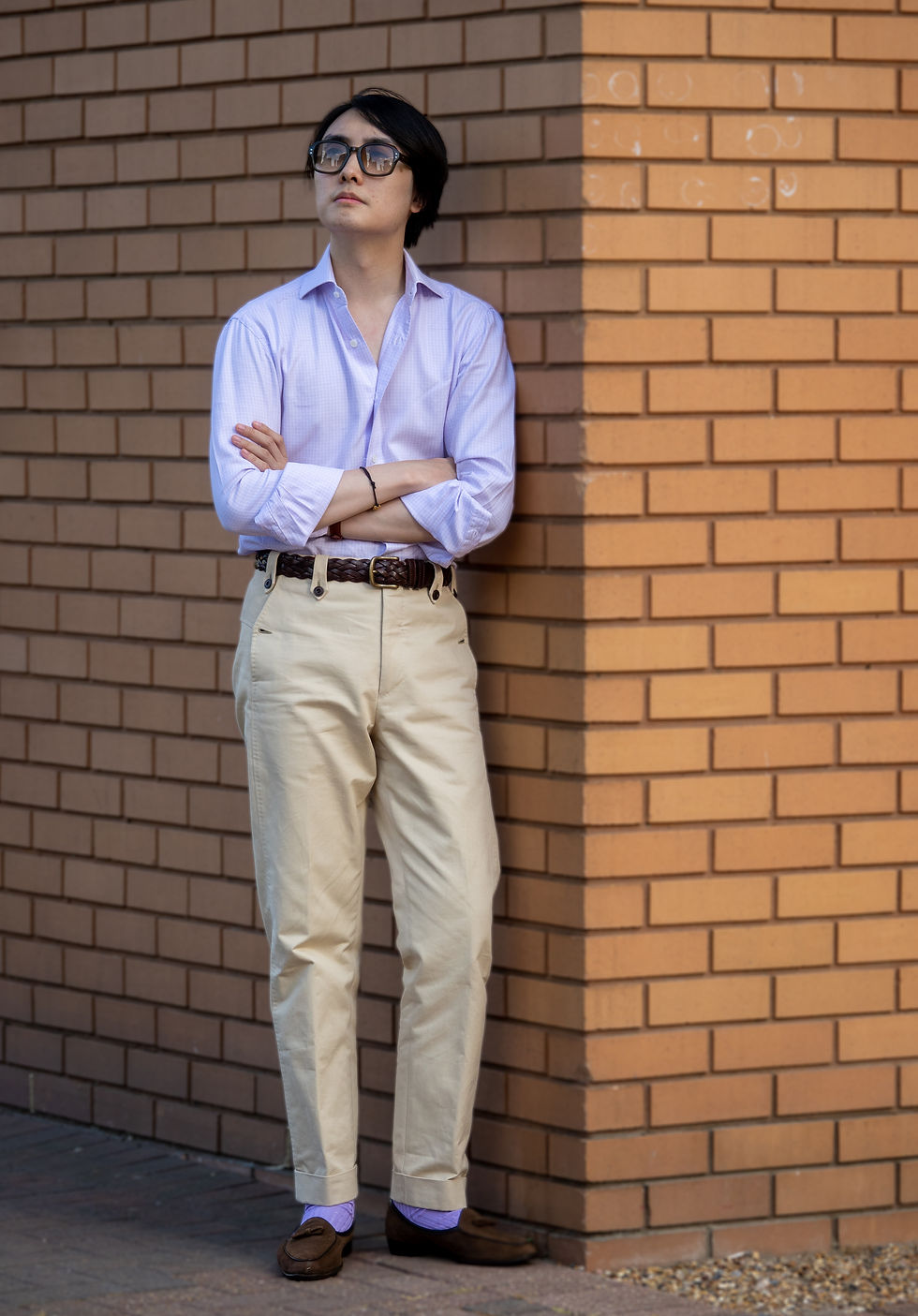
I frequently received questions on how my style has changed over the past one or two years, especially with the further casualization of the sartorial world, alongside my since evolved lifestyle. One notable change is that I have been sporting a lot more sports jackets (pun intended), as they tend to better harmonize with knitwear, than its suitings cousin.
Although this then raises another problem — what the heck do I wear when the occasion does not call for the formality of flannel, the sturdiness of cavalry twill and covet cloth, or the laid-back appearance of denim, linen, and seersucker? This trouser has to be versatile and suitable for year-round wear.
The answer is chinos; though not simply any particular pairs, but specifically these daring fellas from The Arkhé Collection — an up-and-coming essential wear brand, staffed with ex-Savile Row tailors and cutters.
As per usual, a note on the origin and backstory.
Interestingly enough, the term 'Chino' originated from the Spanish word for China. Legend has it that during the Spanish-American War of 1898, US troops stationed in the Philippines were spotting Chinese cotton twill trousers.
Similar to the journey undergone by many wartime garments, most notably Gurkhas, returning soldiers brought these pieces back home, thus paving the way for our protagonist to evolve into civilian wear and the Ivy Style's literal embodiment.
Now, you may be wondering, why is it that Chinos are almost synonymous with Khakis, which denotes a color rather than a fabric (the Hindu word for 'Dyst').
As a matter of fact, Khaki was first developed by Sir Harry Lumsden in 1848 when he was stationed in India. In order to camouflage his white uniform, he developed a dye using a combination of coffee, curry, and mulberries, thus giving birth to this icon shade.
And you've guessed it, Khaki is, of course, one of the two colorways the team has chosen for its first release; with the other being Olive.
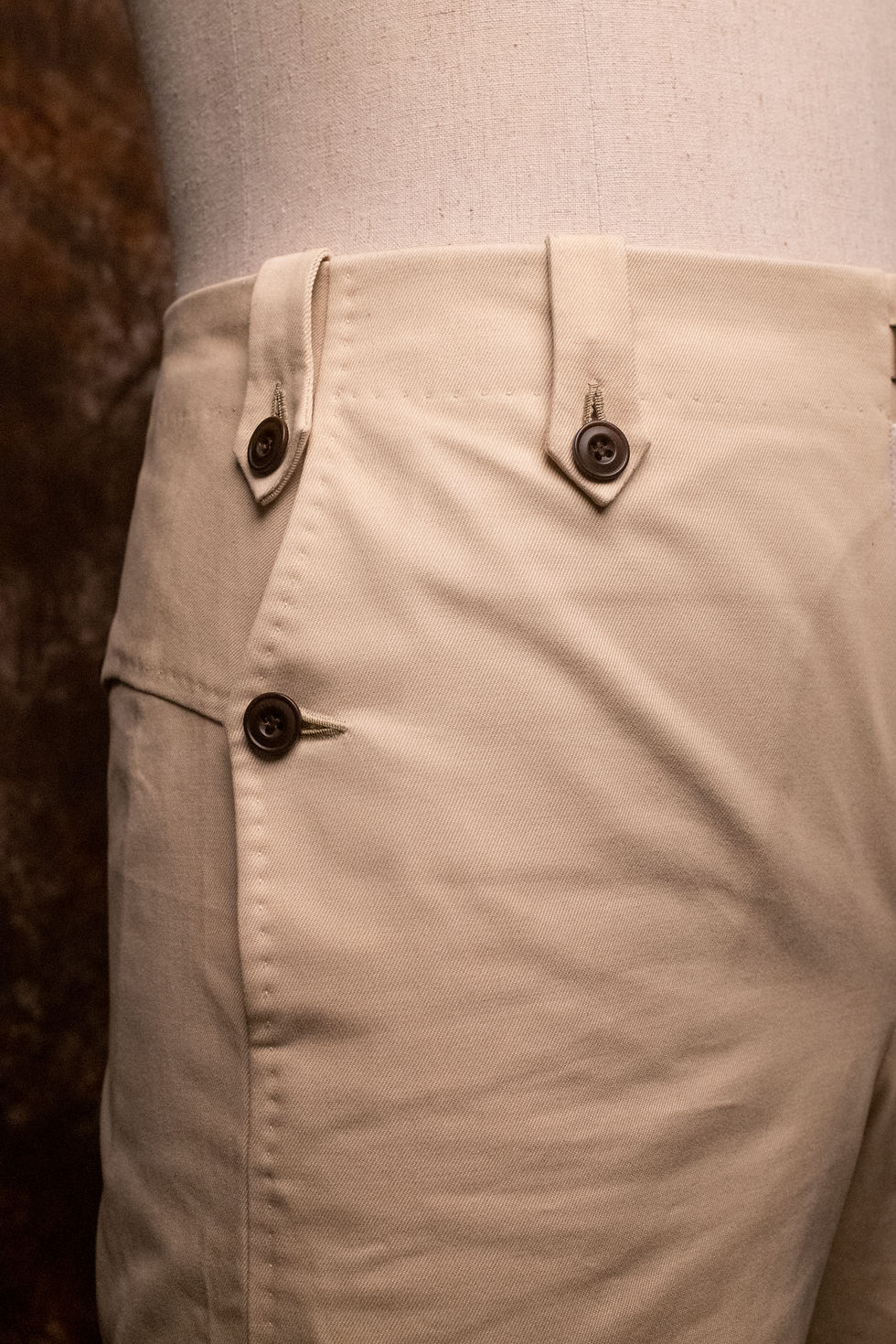
But I digress, as what truly differentiates the Arkhé Chino from other existing market offerings is its design detail — one that, in my humble opinion, sits just right in the middle between the overly-engineered and the typical.
To begin with, all of the design details you would find on a classic chino are present in this model — flat front, slightly tapered, and cut with the outer seams straight (otherwise known as A-cut).
Now, what makes the chino unique are the features on the side and back. With the former, the side pockets have a button-down flap which extends from the front panel. This effectively hides the side seam going into the waistband, hence offering a cleaner appearance.
Then, of course, having the option to fasten the pocket is always useful when one happens to be carrying smaller items.

As for the back, it uses a yoke for shaping rather than the conventional darts.
From a technical point of view, a yoke supposedly helps with reinforcing the seat, by distributing horizontal stress along the seam rather than being perpendicular to it. This is also the reason why denim and riding breeches often tend to have this feature.
Frankly speaking, though I haven't personally had any issues with the dart coming apart, this feature may be useful for those with more prominent seats. Or those who feel the occasional need to do a few squats. (Wearable and functional tailoring, am I right?)
The team also made a rather sensible choice by integrating the back pocket flaps into this yoke seam. More than just echoing the side seam and pocket designs, it also cleans up the overall back silhouette of the chino.

Another feature that is uncommon to come by is the dual belt loop/ braces buttons mechanism.
Dennis Tian, the creative mastermind behind, explained that these were popular for many wartime trousers due to their functionality for attaching braces, belts, and upper garments; with battle dresses being the prime example.
Having versatility in mind, the belt loops are designed in a way that allows them to be unbuttoned and repositioned to the inside, thus opening up the room for braces to be attached at the front.

Undoubtedly, a well-designed garment should always be matched with exquisite craftsmanship.
The level of handwork, notably the waistband lining, fly, and side seams are all hand-stitched to a level which is on par with Row-level finishing. Additionally, the entire waistband is attached by hand to create a natural curvature that conforms to the body.
Finally, no good products are finished without a bit of a self-aware contradiction, and in this case, the buttonholes are also handsewn to mimic the old Reece 101 style Buttonholes (see below).
For those who are unfamiliar with the style, the Reece 101 Buttonhole machines were the first to mimic hand-sewn buttonholes with gimp thread — allowing for a fuller and more durable machine-made buttonhole.
Considering the original Reece 101 machines have ceased to be produced, any original Reece-style buttonhole can only be made by vintage machines, which are heavily sought after by denim heads and vintage enthusiasts.
As ironic as it goes, and perhaps even a romantic move itself, the Arkhé Chinos bring a feature synonymous with the transition to industrialization and mass production, back to hand sewing.
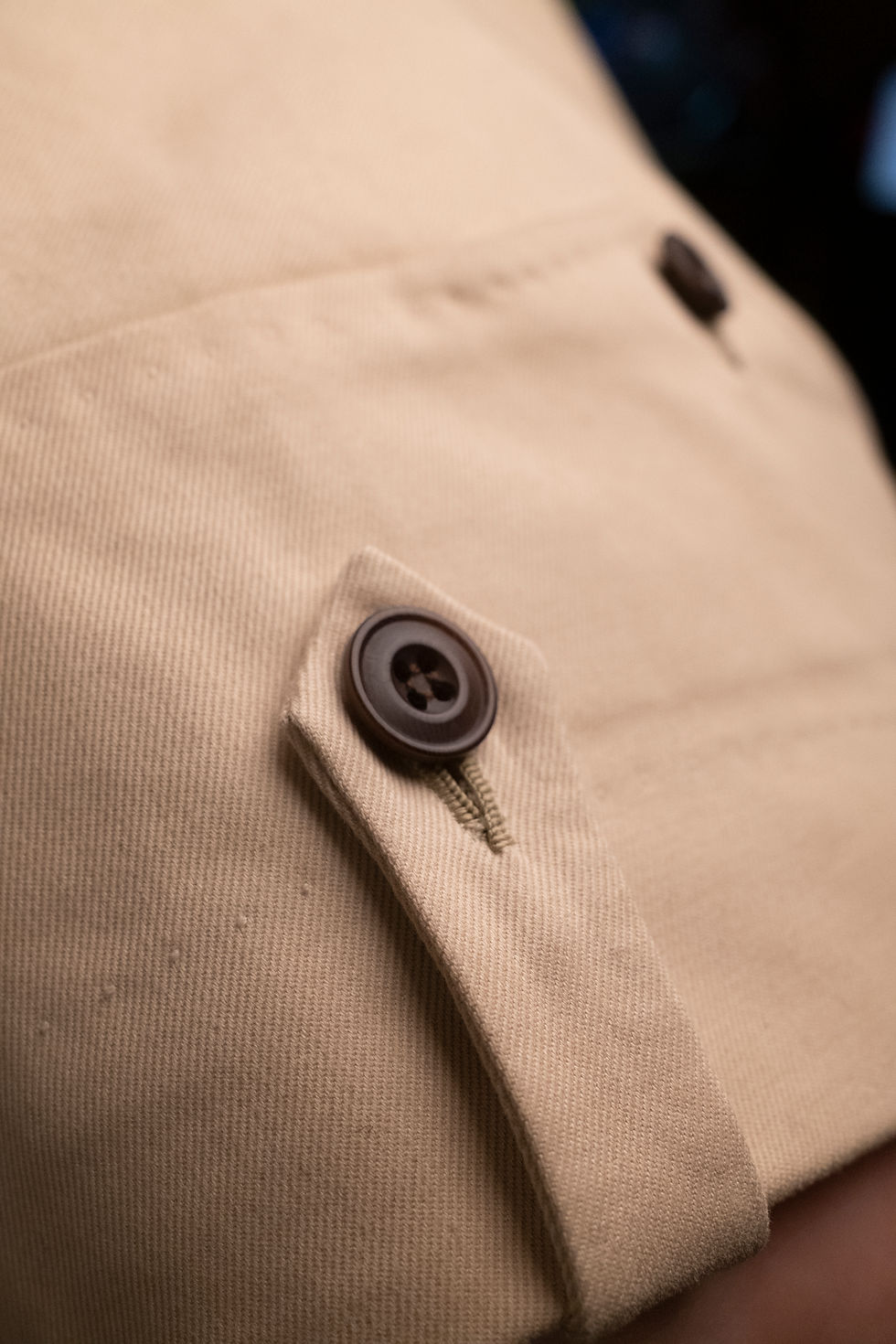
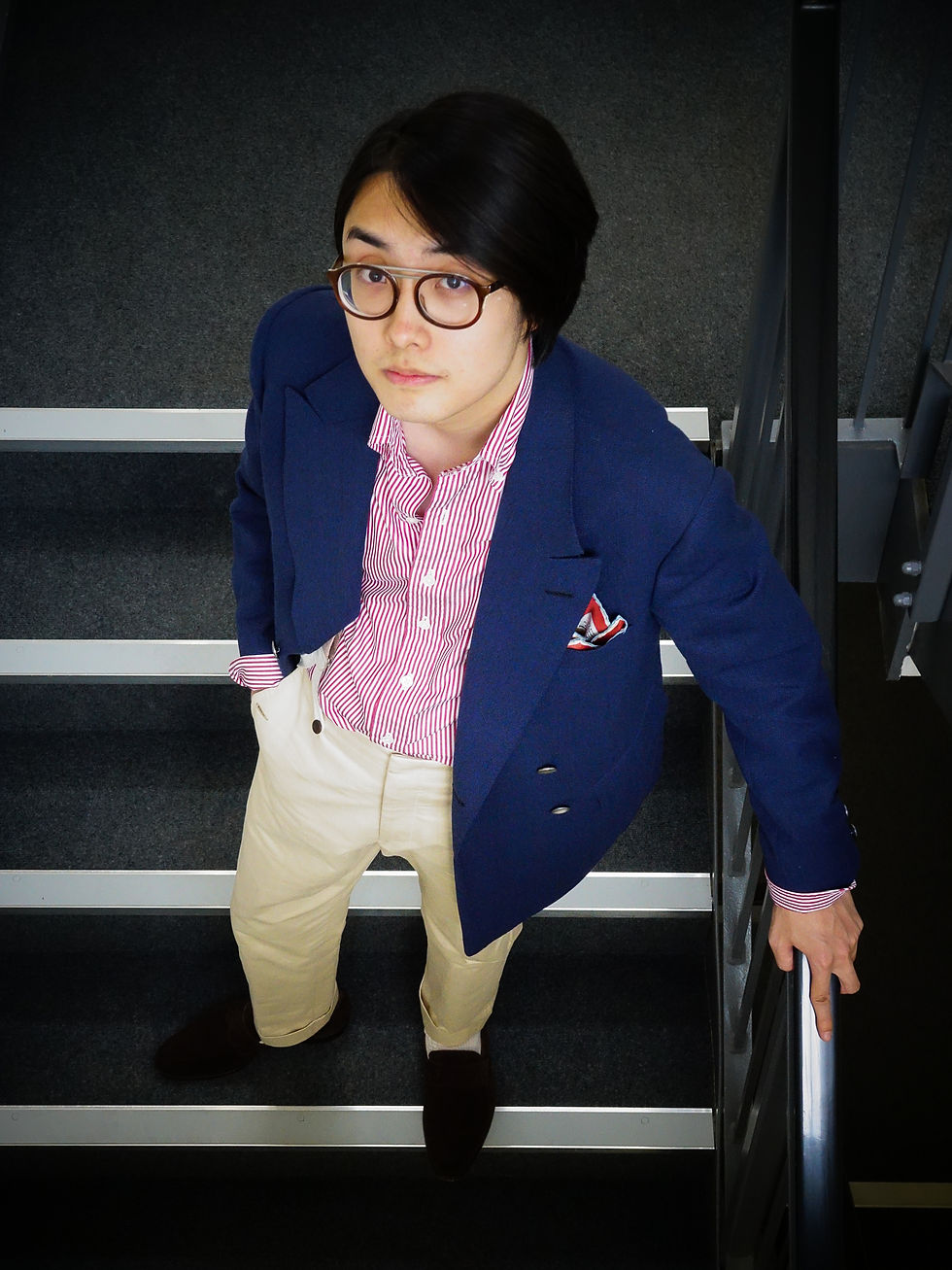
So, how do you style the Arkhé Chinos?
The most straightforward way would be with blazers. Above I am pairing the chinos with a button-down stripe poplin shirt from Drake's, ivory socks from Mazarin, and espresso brown suede loafers from Crockett & Jones. The jacket is a bespoke 4*1 DB blazer from Whitcomb & Shaftesbury.
Frankly speaking, I'd say both the braces and the belt loops would work with this outfit, but I could see readers who prefer not to wear belts with 3 or 4-ply worsted wool fabrics, such as the Airesco from Holland & Sherry I've used for this jacket, would opt for the look above instead.
This outfit would work rather nicely in a relaxed working environment, where suitings are not mandatory, and the drinks that follow after.
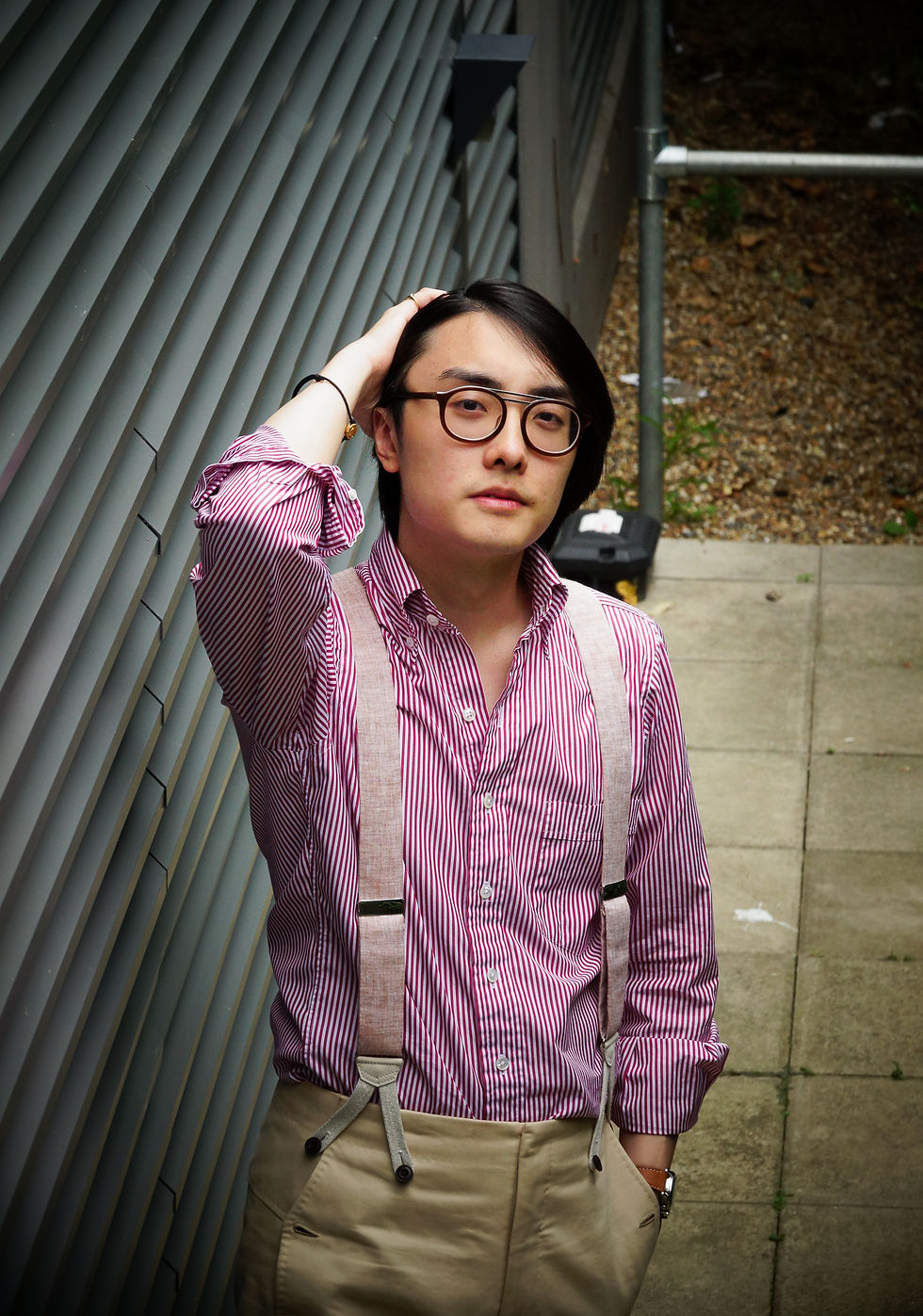

For option 2, you could also swap out the poplin shirt with a polo shirt, and the blazer with a sports jacket that has a bit more of an uneven texture, such as the Tengri Jacketing cloth or perhaps a tweed.
Here I am also sporting a bespoke beaver felt fedora from Wellema, which I have recently reviewed, and a cherry brown braided leather belt from Anderson & Sheppard.
Of course, there would be instances where the temperature cannot accommodate any jackets and fedoras, leaving the user with a somewhat old-fashioned father figure outfit. Again, this is why I consider that extra touch of design details — especially in the case of the back yoke and flap pockets — to really help refine the outfit.

Finally, you can ditch the tailored jacket and opt for a suede jacket, and the polo with a knitted t-shirt. The ones I am wearing are from Dunhill and The Anthology respectively.
I always favor a neutral color palette for non-tailoring outfits, as it helps project the wearer's relaxed and easy-going aura. I am comfortable about running errands and buying groceries in this combination, too.
I am certain readers will find many more ways to pair the Arkhé Chino.
Finally, a word on the fabric. The chino is made up of a 295gsm cotton from Brisbane Moss, a mid-weight cloth I helped choose. So far I have worn the trouser under the rain in London when it was 14°c. I have also survived the Tuscan heat at 35°c in it. If year-round wearability is what you are seeking, it really doesn't go any better than this.


The Arkhé Chino is now available to purchase at The Suitstainable Man's shop, on an MTM basis.
If you have any questions, say for instance, the possibility of selecting a different cloth, you can shoot me an email at linus@thesuitstainableman.com.
Photography: as stated, otherwise own





Comments